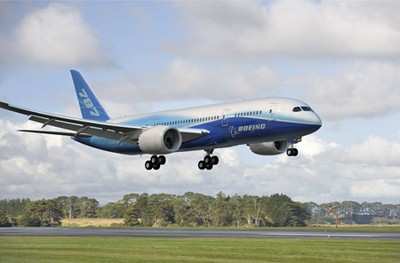Sun, Oct 11, 2020
AD 2020-20-09 Requires Installing Flight Control Electronics (FCE) Common Block Point 5 (CBP5) Software
The FAA is superseding Airworthiness Directives (ADs) 2015-14-07, 2016-07-10, and 2016-24-09. AD 2015-14-07 applied to certain The Boeing Company Model 787-8 airplanes.

AD 2016-07-10 and AD 2016-24-09 applied to all The Boeing Company Model 787-8 and 787-9 airplanes. ADs 2015-14-07, 2016-07-10, and 2016-24-09 required actions related to certain flight control module (FCM) software. This AD requires installing flight control electronics (FCE) common block point 5 (CBP5) software, which terminates the requirements of the ADs superseded by this AD. This AD was prompted by certain deficiencies in the FCM software, including a report of an unannunciated dual symmetric inboard slat skew. The FAA is issuing this AD to address the unsafe condition on these products. This AD is effective November 13, 2020.
Supplementary Information: The FAA issued a notice of proposed rulemaking (NPRM) to amend 14 CFR part 39 to supersede the following ADs:
- AD 2015-14-07, Amendment 39-18205 (80 FR 42014, July 16, 2015) (“AD 2015-14-07”). AD 2015-14-07 applied to certain Model 787-8 airplanes.
- AD 2016-07-10, Amendment 39-18455 (81 FR 18741, April 1, 2016) (“AD 2016-07-10”). AD 2016-07-10 applied to all Model 787-8 and 787-9 airplanes.
- AD 2016-24-09, Amendment 39-18726 (81 FR 86912, December 2, 2016) (“AD 2016-24-09”). AD 2016-24-09 applied to all Model 787-8 and 787-9 airplanes.
The NPRM published in the Federal Register on January 2, 2020 (85 FR 23). The NPRM was prompted by deficiencies in the FCM software, including reports that, in certain weather conditions, erroneous low airspeed data may be displayed to the flightcrew before detection and annunciation via engine-indicating and crew alerting system (EICAS) messages, a report indicating that all three FCMs might simultaneously reset if continuously powered on for 22 days, and one report of unannunciated dual symmetric inboard slat skew. The NPRM proposed to require installing FCE CBP5 software, which would also address the identified unsafe conditions and terminate the requirements of the ADs superseded by this AD. The FAA is issuing this AD to address deficiencies in the FCM software that could prevent continued safe flight and landing; to prevent unrealistic, sudden drops in displayed airspeed at high actual airspeed, which could lead to pilot control inputs that could exceed the structural capability of the airplane;
to prevent simultaneous resets of all three FCMs, which could result in flight control surfaces not moving in response to flight crew inputs for a short time and consequent temporary loss of controllability; and to address potential unannunciated dual symmetric inboard slat skew, which can result in adverse handling characteristics of the aircraft.
More News
From 2021: The Inside Skinny On What Being An ANN Oshkosh Stringer Is All About By ANN Senior Stringer Extraordinare, Gene Yarbrough The annual gathering at Oshkosh is a right of p>[...]
Video Showed That During The Takeoff, The Nose Baggage Door Was Open On May 10, 2025, about 0935 eastern daylight time, a Piper PA-32RT-300, N30689, was destroyed when it was invol>[...]
Get The Latest in Aviation News NOW on Instagram Are you on Instagram yet? It's been around for a few years, quietly picking up traction mostly thanks to everybody's new obsession >[...]
"I think what is key, we have offered a bonus to air traffic controllers who are eligible to retire. We are going to pay them a 20% bonus on their salary to stay longer. Don't reti>[...]
Aero Linx: Pilot Briefing The gathering, translation, interpretation, and summarization of weather and aeronautical information into a form usable by the pilot or flight supervisor>[...]
 Oshkosh Memories: An Aero-News Stringer Perspective
Oshkosh Memories: An Aero-News Stringer Perspective NTSB Prelim: Piper PA32RT
NTSB Prelim: Piper PA32RT ANN FAQ: Follow Us On Instagram!
ANN FAQ: Follow Us On Instagram! Aero-News: Quote of the Day (05.28.25)
Aero-News: Quote of the Day (05.28.25) ANN's Daily Aero-Term (05.28.25): Pilot Briefing
ANN's Daily Aero-Term (05.28.25): Pilot Briefing



